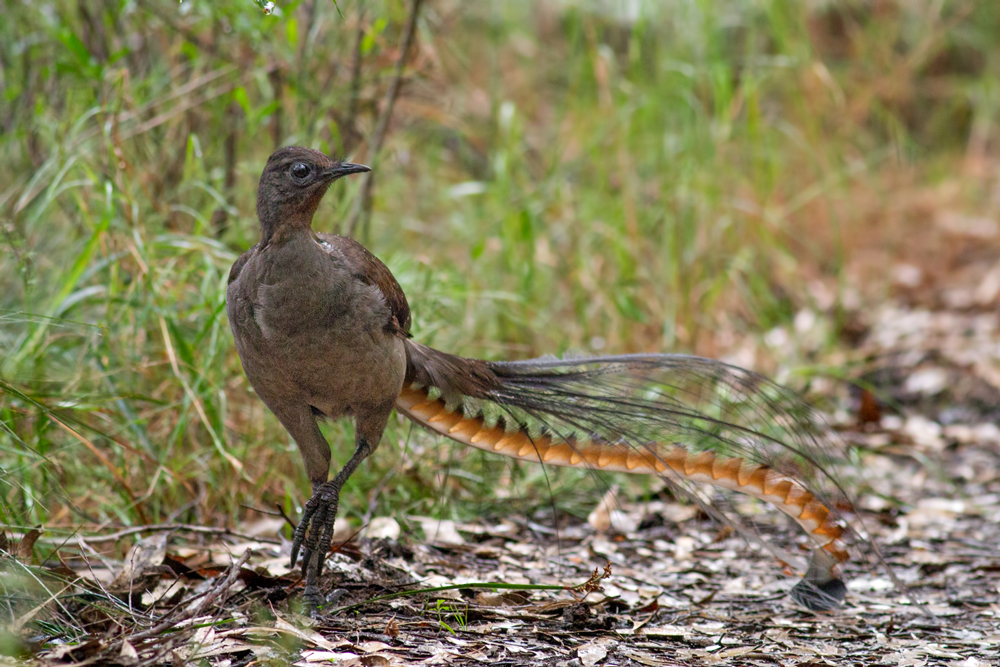
Menura novaehollandiae
TAXONOMY
Menura novaehollandiae Latham, 1802, Upper Nepean River,
New South Wales. Three subspecies.
(The specific name novaehollandiae has been and remains in
general use. However, its adoption was based on a mistake as
to the date of publication, and on a strict interpretation of the
International Code of Zoological Nomenclature, the name superba,
Davies, should take priority. An application has been
made to the International Commission for suppression of superba
as an unused senior synonym.)
OTHER COMMON NAMES
English: Superb lyrebird, Edward lyrebird, Prince Edward
lyrebird, Victoria lyrebird, Queen Victoria lyrebird; French;
Mйnure superbe; German: Graurьcken-Leierschwanz; Spanish;
Ave Lira Soberbia.
The lyrebird was well-known to the Aboriginal people.
Names from various language groups included: balangara,
bulan-bulan, beleck-beleck, golgol, and woorayl. The double
names almost certainly were derived from the loud double
notes of the lyrebird’s “pilick” song.
PHYSICAL CHARACTERISTICS
30–39 in (76–100 cm); female 1.9 lb (0.88 kg), male 2.3 lb
(1.06 kg). Male has highly ornamental tail, 28 in (71 cm).
Outer pair of feathers elongated S-shape, decorated with semitransparent
“windows”; six pairs of filamentary feathers; central
pair very narrow. Very strong legs and feet. Long claws span 6
in (15 cm).
DISTRIBUTION
M. n. edwardi: Hunter River north to near Stanthorpe; M. n.
novaehollandiae: Hunter River to Victorian border; M. n. victoriae:
Victoria, east of Melbourne, plus Snowy Mountains to
Brindabella Range in New South Wales.
HABITAT
Wet sclerophyll forest, subtropical and temperate rainforest,
Antarctic beech (Nothofagus) forest, dry sclerophyll forest, eucalyptus
woodland.
BEHAVIOR
Separate male and female territories. Males sing and display on
arenas consisting of low earth mounds. Sedentary. Mostly solitary,
occasionally two or more together.
FEEDING ECOLOGY AND DIET
Forage on the ground for invertebrates in soil and litter,
scratching and digging to a depth of several inches (10 cm).
REPRODUCTIVE BIOLOGY
Males promiscuous. Female alone builds nest, incubates the
single egg, and cares for the chick, which sometimes still begs
from its mother at start of next breeding season.
CONSERVATION STATUS
All three subspecies are not threatened, though considerable
reduction in habitat through European settlement. Some small
isolated populations may be at risk.
SIGNIFICANCE TO HUMANS
Hunted for food and ornamental tails by early European settlers.
This is the species that is now well-known and highly regarded
by the public.
Photo Gallery of - Superb lyrebird
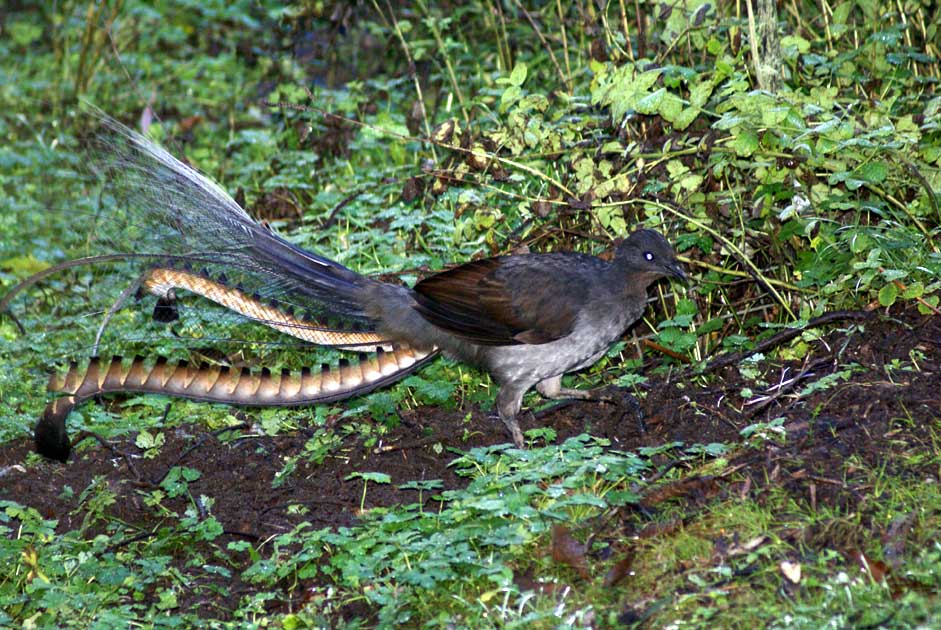
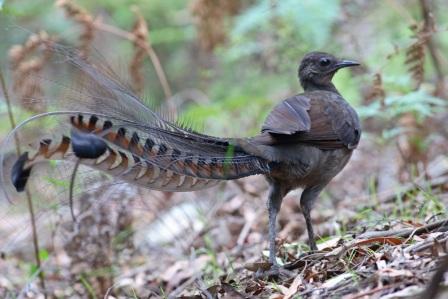
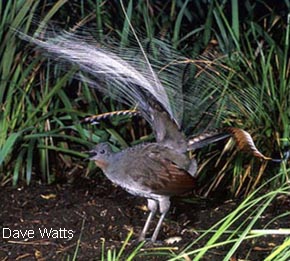
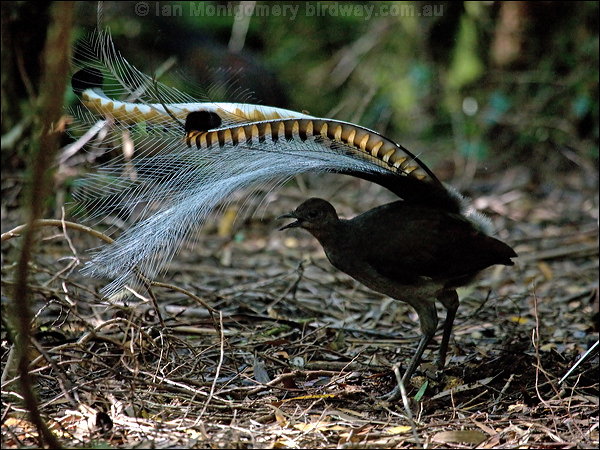
 Animalia Life
Animalia Life